Maverick Life
2021 Sony World Photography Professional Competition: Finalists and shortlist (Part Three)
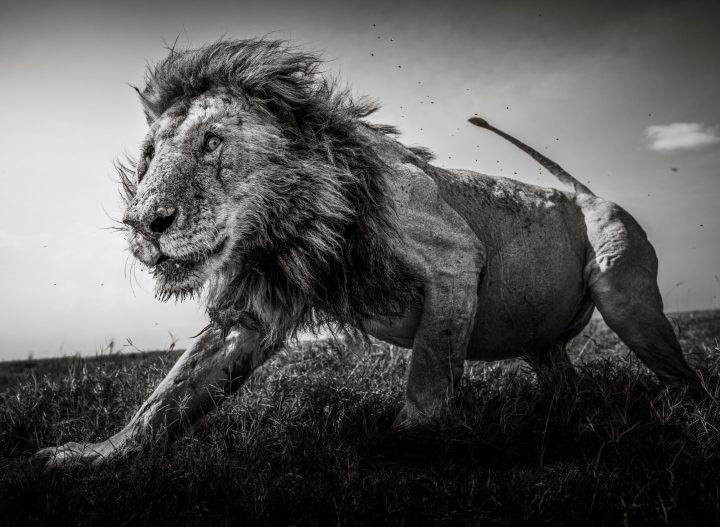
The Sony World Photography Organisation recently announced the finalist and shortlisted photographers in the professional competition for 2021. Here is a selection of the images, in the nature and wildlife categories.
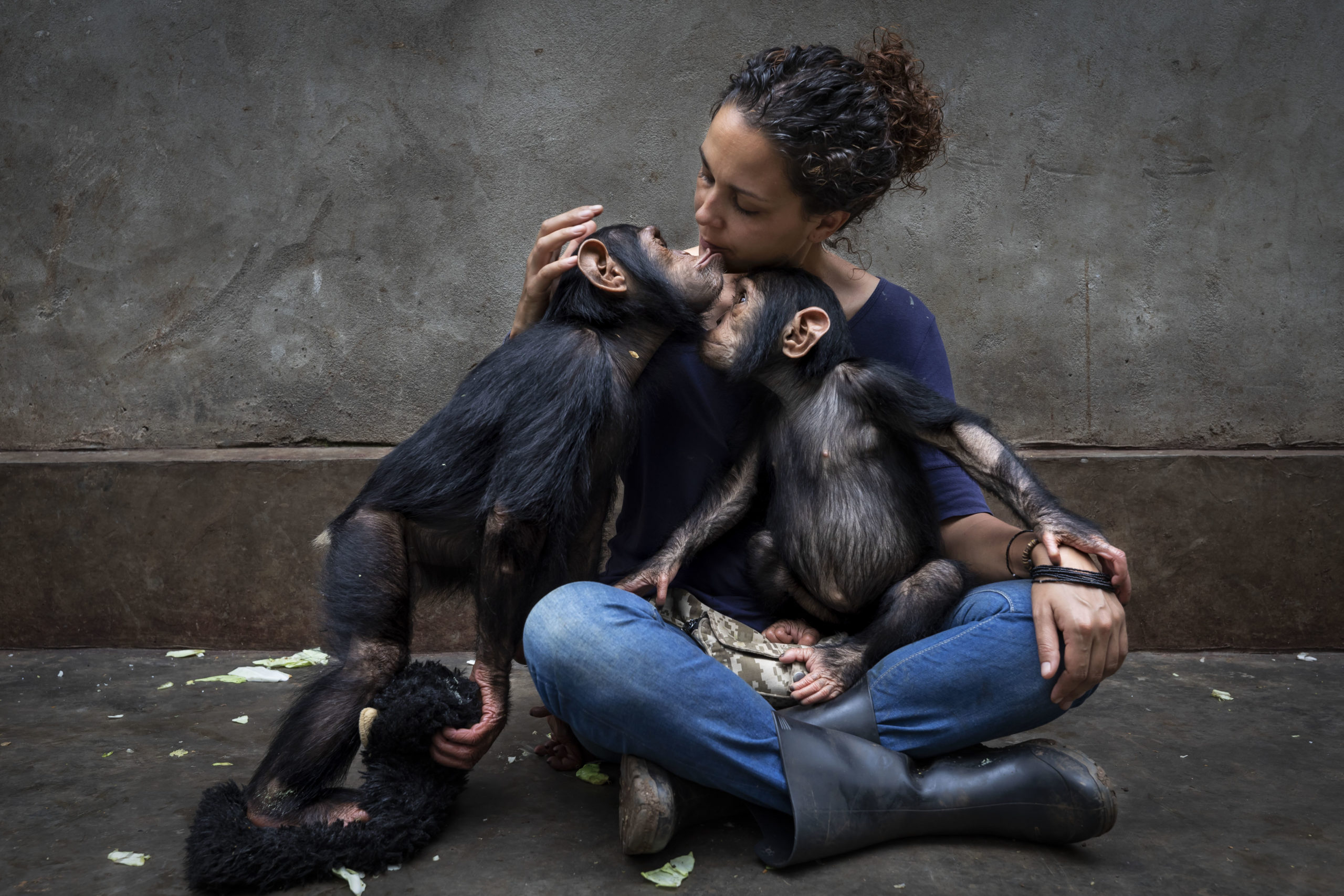
Itsazo Velez, the director at the Lwiro Chimpanzee rescue and sanctuary center, introduces two new rescued baby chimps into the juvenile enclosure at the center. Itsazo is careful to introduce the new babies slowly, seperating the large juveniles first and slowly allowing the group to meet the two new arrivals. They will be closely monitored by the keepers who live with the juvenile and baby chimps 24/7 in their enclosure and at night in their night dormitory. These chimps are all rescues and come from the bushmeat trade in DRC after their mothers were killed for bushmeat. The babies are often taken for sale and sometimes for pets. As a result many of these chimps have lived lives of isolation, suffering and cruelty. The sanctuary is a place where they can learn to be chimps for the first time and interact with other chimps. They were brought to the sanctuary after being rescued either by the Congolese Conservation authority or the Lwiro staff. Rescuing and saving baby chimps is difficult. When they are taken by poachers, they are subject to tremendous trauma and abuse, and cannot access the nutrition they need to survive. The care required for their survival is similar to that needed by human babies – an often-exhausting 24/7 process. Many of the caregivers at this sanctuary are victims of the conflict; a number have been raped, displaced or wounded. They see the chimps as healing them as much as they are healing the chimps. The bushmeat trade in the Congo Basin is the largest in the world. Chimpanzees are often shot for the trade and their babies taken for possible sale. This essay attempts to show some of what is required to save those few chimps that are rescued, an estimated one in 10. We see this through the lens of rescue personnel, bushmeat markets, vets at work and Lwiro, a rescue sanctuary for chimps in a part of the Democratic Republic of Congo where conflict is a regular feature and wildlife is the last priority unless it can be eaten or sold. © Brent Stirton, South Africa, Shortlist, Professional, Wildlife & Nature, 2021 Sony World Photography Awards.
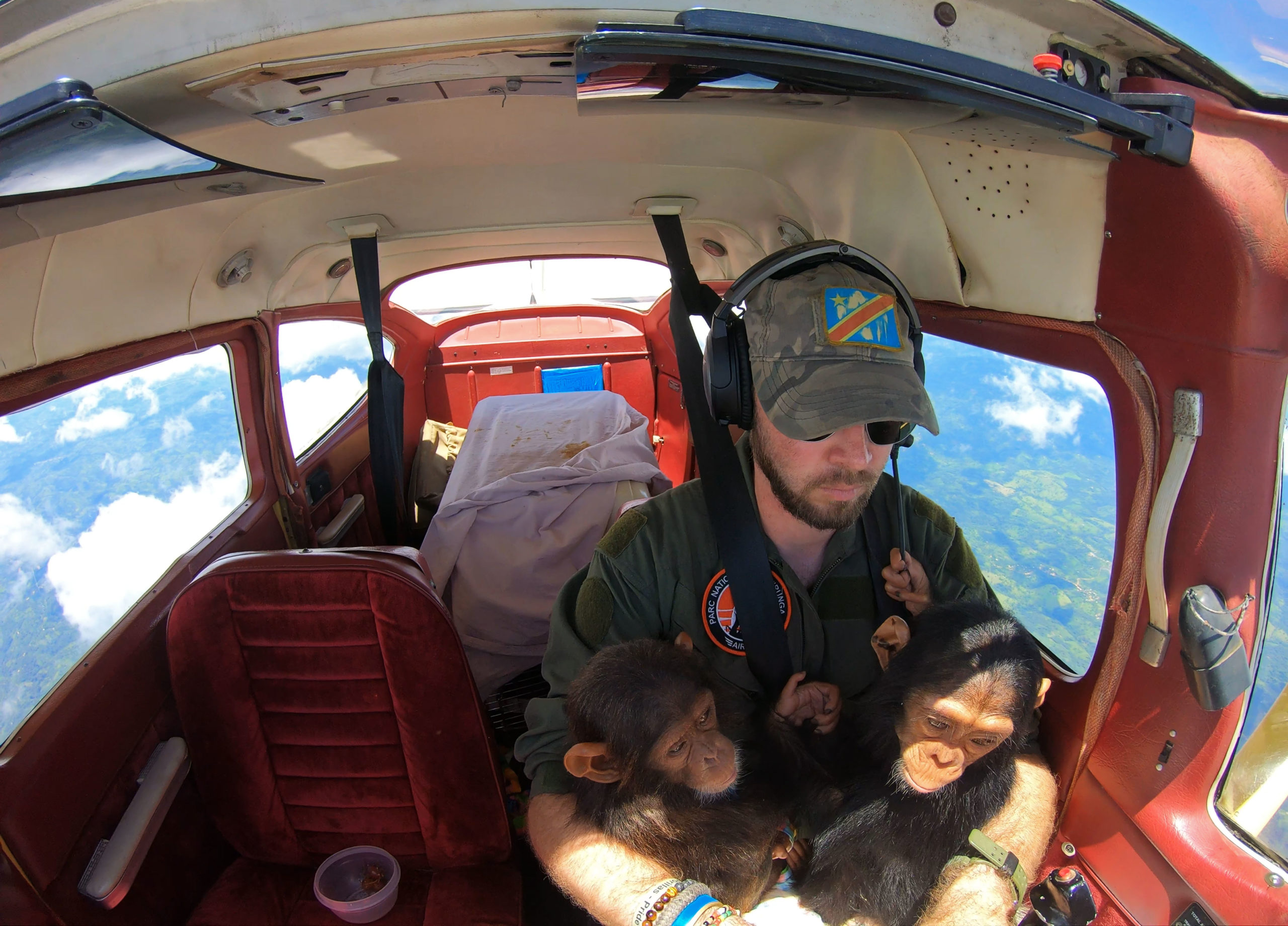
Democratic Republic of Congo, Bukavu: Virunga National Park pilot Anthony Caere flies two rescued baby chimps to Lwiro Primates Rehabilitation center. These babies are survivors of the illegal bushmeat trade and were rescued by Congolese conservation investigators. Their mothers were killed and their meat sold by hunters who then tried to sell the babies as pets. Once at the center, the babies will be cared for like human children by keepers in a house, easing their trauma and preparing them to join the other rescued chimps in the santuary. © Brent Stirton, South Africa, Shortlist, Professional, Wildlife & Nature, 2021 Sony World Photography Awards
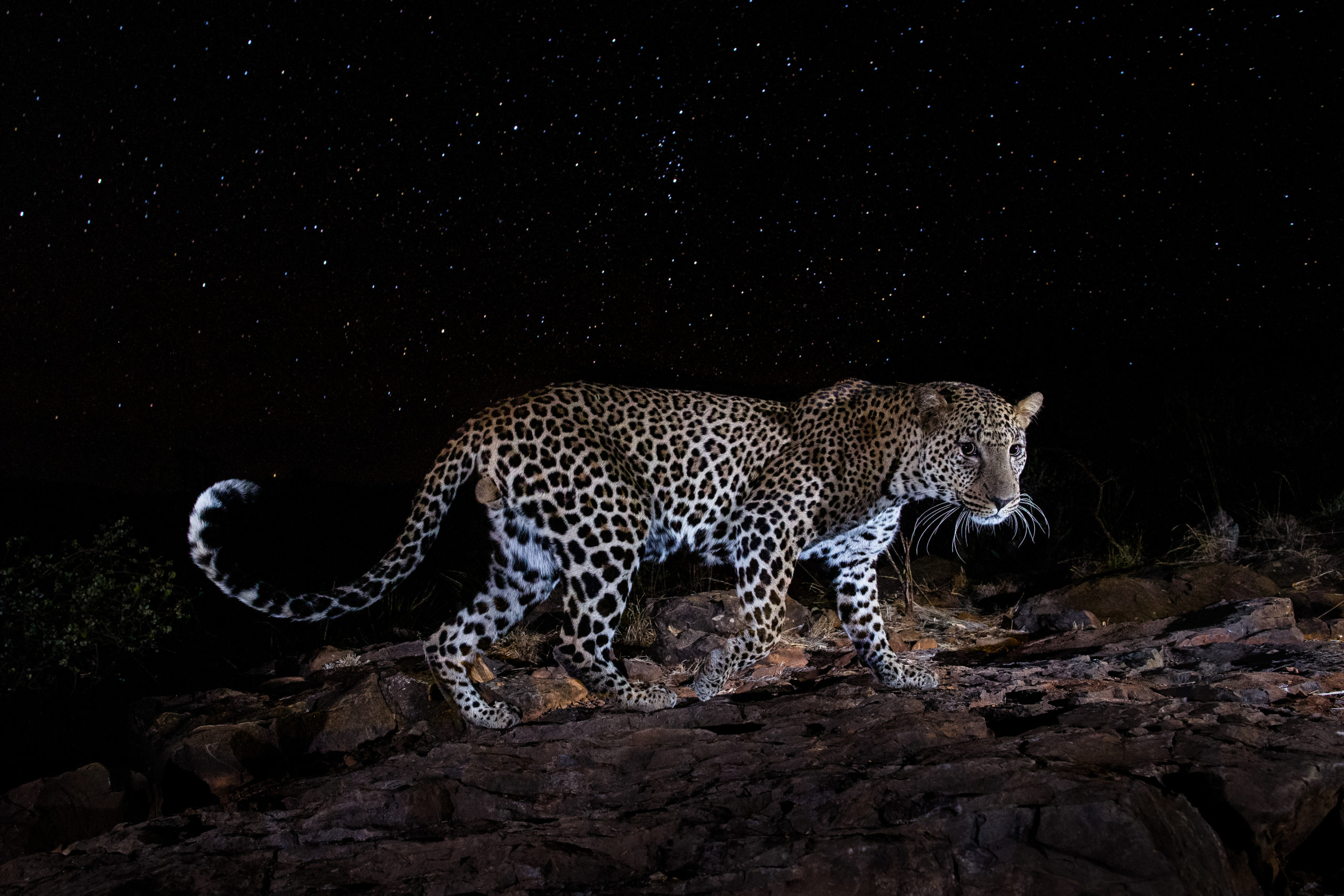
Starlit Leopard. I spent more than a year photographing leopards in Kenya’s Laikipia County. One of the leopards in this area is a very rare melanistic individual – a black panther. Prior to this project, a black leopard had not been scientifically documented in Africa for more than 100 years. The normal ‘spotty’ leopards shown in this series are thought to be the parents of the black leopard. © Will Burrard-Lucas, United Kingdom, Shortlist, Professional, Wildlife & Nature, 2021 Sony World Photography Awards
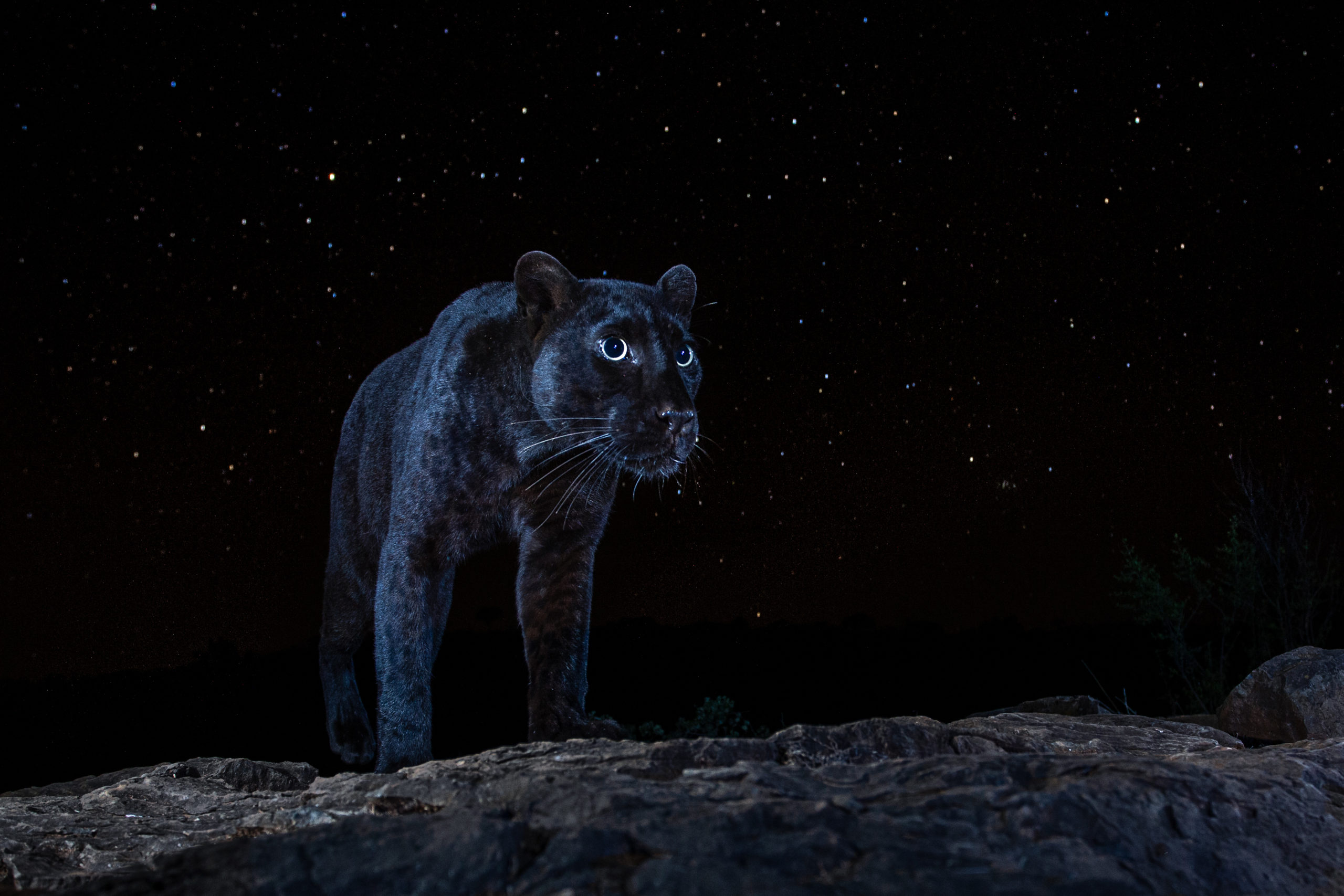
Black Leopard Under the Stars. Working exclusively at night allowed me to get creative with lighting. In some images, I used dramatic, studio-like lighting, while in others I balanced my flash with ambient moonlight or even exposed stars in the night sky. Working with such an unusual black animal in the black of night was both a great challenge and a wonderful opportunity to experiment with light. © Will Burrard-Lucas, United Kingdom, Shortlist, Professional, Wildlife & Nature, 2021 Sony World Photography Awards
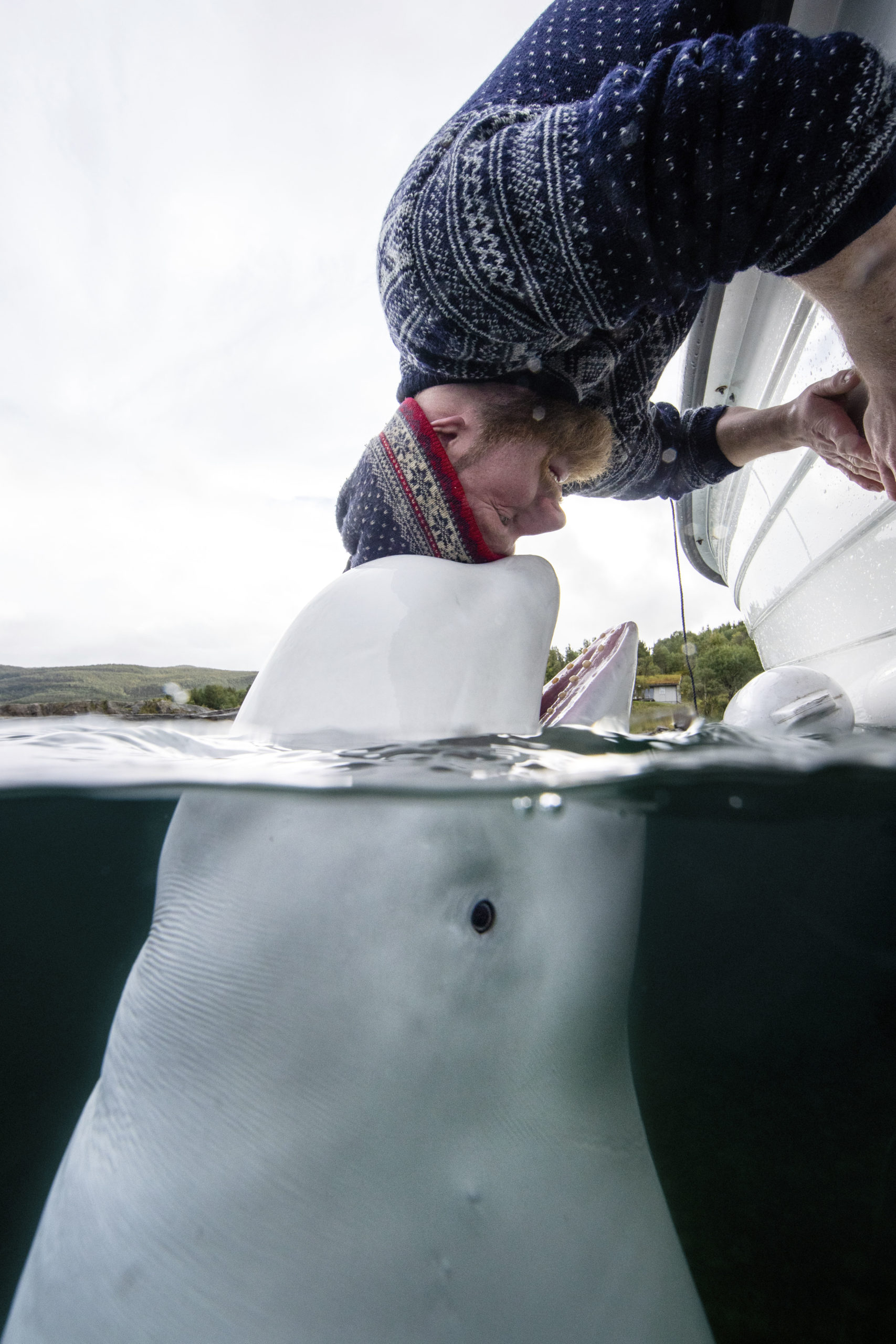
Love. This is the story of a beluga whale called Hvaldimir and a fisherman called Joar Hesten. When the fisherman and former whaler jumped into the ice-cold Arctic water and freed Hvaldimir from a harness that had been fitted to the whale, both their lives changed forever. © Aleksander Nordahl, Norway, Shortlist, Professional, Wildlife & Nature, 2021 Sony World Photography Awards
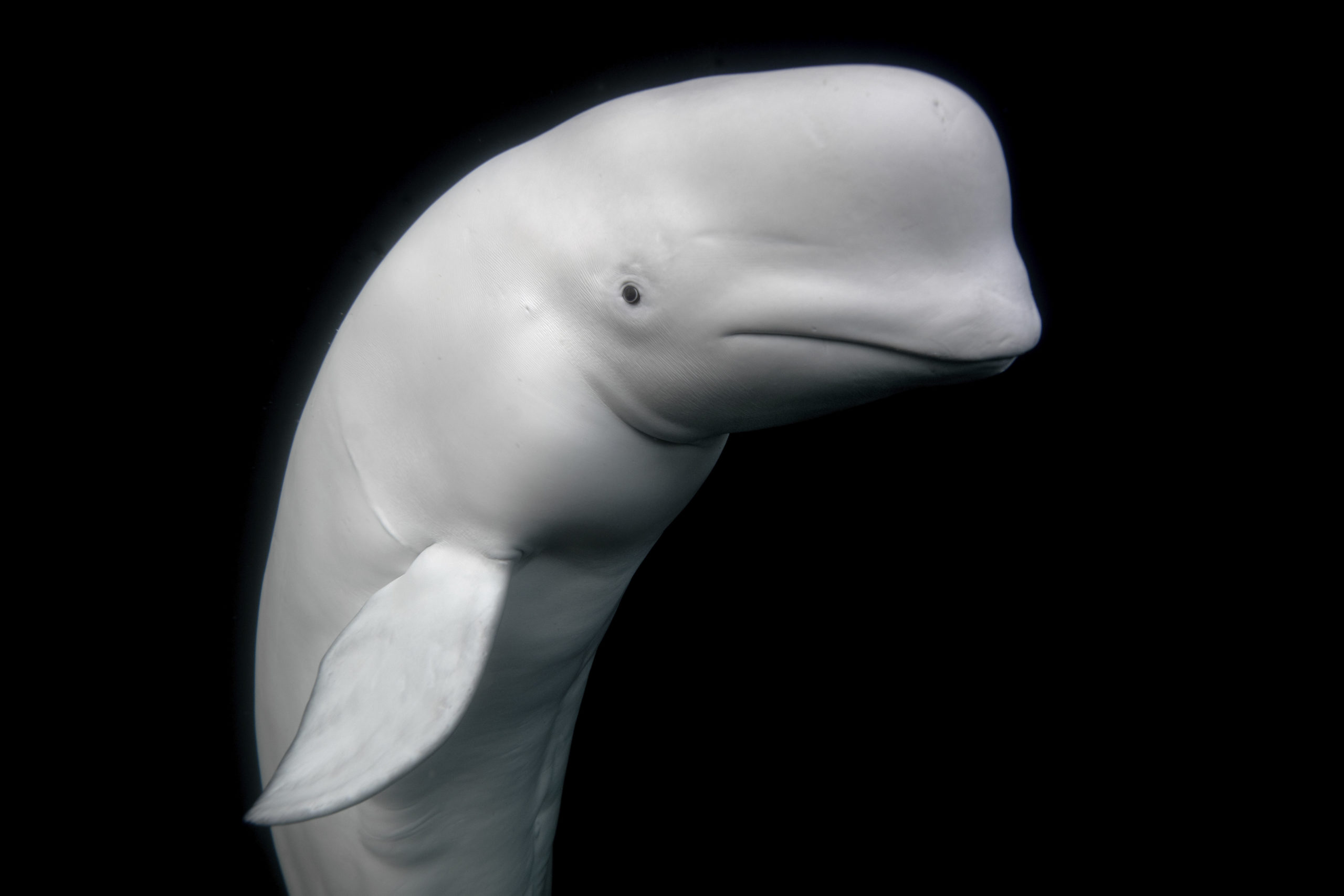
Hvaldimir. When this white mystic creature turned up in the Arctic waters of Norway, bordering Russia, American activists turned up. Hollywood called and Saudi money was spent. The friendly beluga whale became an Instagram star. When the fuss settled, Joar returned home down south and Hvaldimir did likewise. In the summer of 2020, he turned up in the fjord neighbouring Joar’s home. During that summer and autumn, the former whaler visited the whale, looking after him and discussed with annoyed fish farmers how they best could protect it. © Aleksander Nordahl, Norway, Shortlist, Professional, Wildlife & Nature, 2021 Sony World Photography Awards
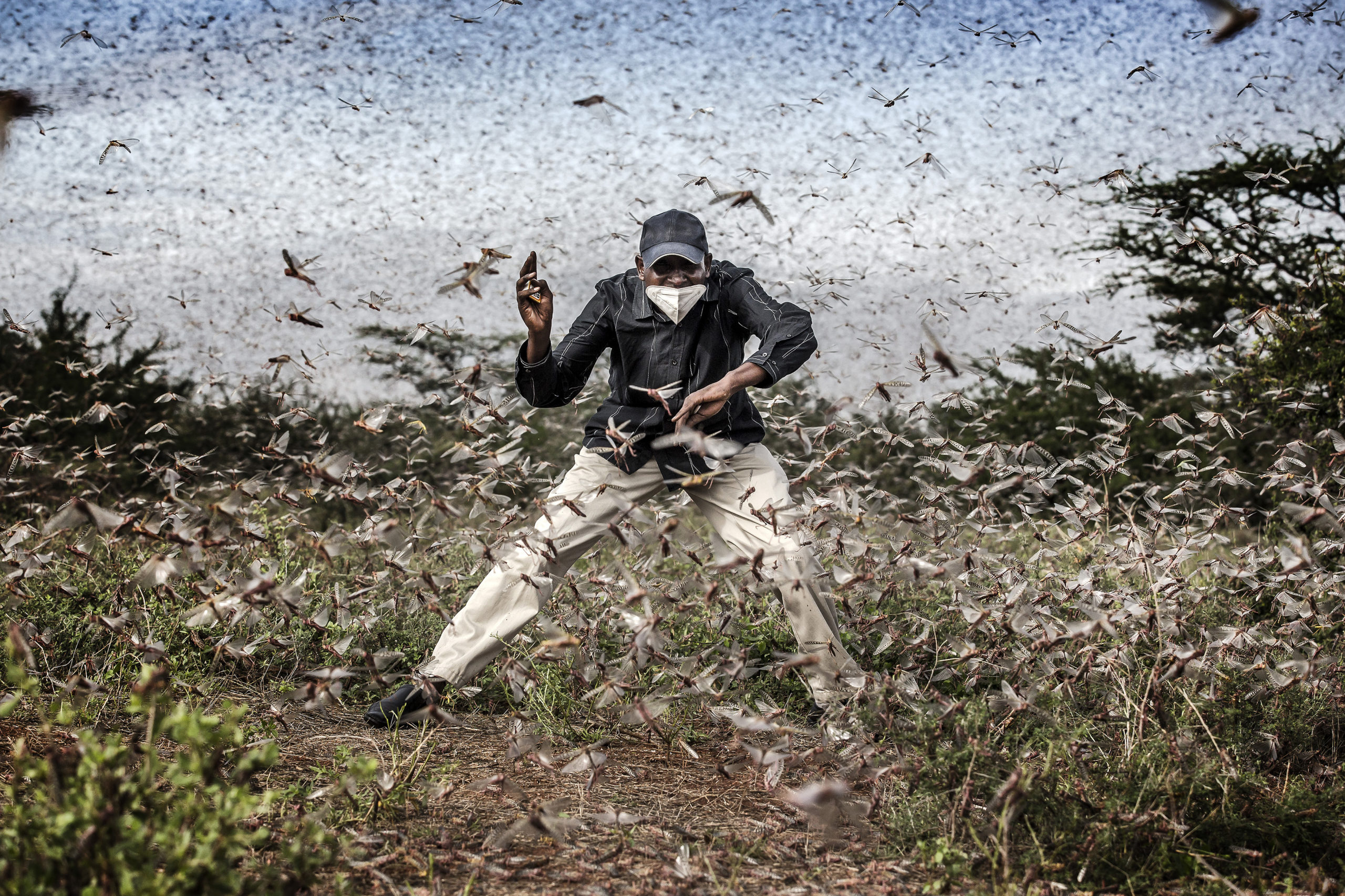
Invasion in East Africa. Herny Lenayasa, a Samburu man and chief of the settlement of Archers Post tries to scare away a massive swarm of locust ravaging an area next to Archers Post, Samburu County, Kenya on April 24, 2020. A locust plague fueled by unpredictable weather patterns up to 20 times larger than a wave two months earlier is threatening to devastate parts of East Africa. Locust has made already a devastating appearance in Kenya, two months after voracious swarms -some billions strong- ravaged big areas of land and just as the coronavirus outbreak has begun to disrupt livelihoods. In spite of coronavirus-related travel restrictions, international experts are in place to support efforts to eradicate the pest with measures including ground and aerial spraying.
The Covid-19 pandemic has competed for funding, hampered movement and delayed the import of some inputs, including insecticides and pesticides. The UN Food and Agriculture Organisation (FAO) has called the locust outbreak, caused in part by climate change, “an unprecedented threat” to food security and livelihoods. Its officials have called this new wave some 20 times the size of the first. © Luis Tato, Spain, Finalist, Professional, Wildlife & Nature, 2021 Sony World Photography Awards
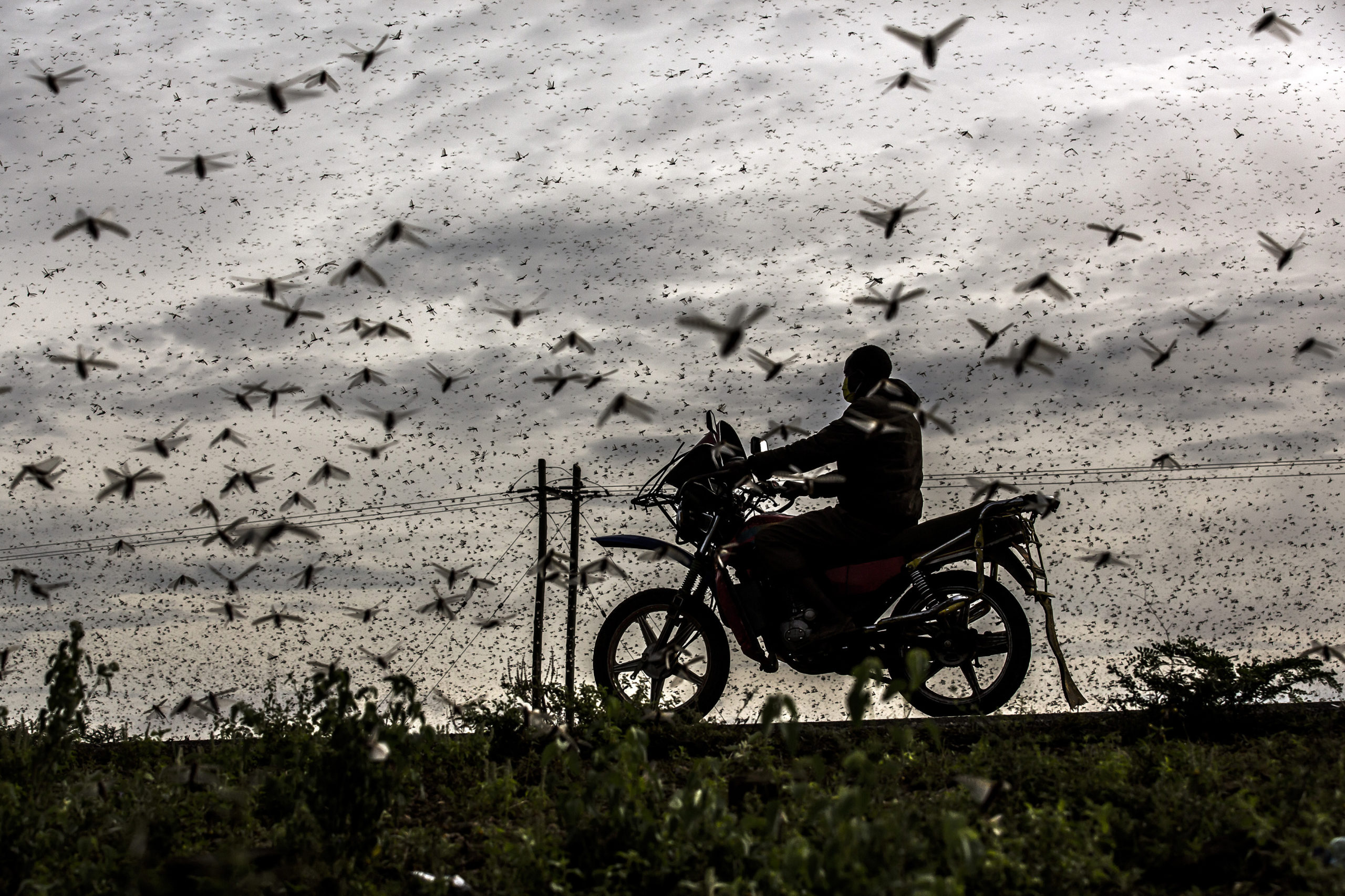
A motorbike rider wearing a face mask rides a motorbike in a road surrounded by a massive swarm of locust ravaging an area next to Archers Post, Samburu County, Kenya on April 24, 2020. Some areas of East Africa, such as Kenya, had not seen such severe desert locust outbreaks in more than 70 years. Covid-19 restrictions have significantly slowed efforts to fight the infestation, as crossing borders has become more difficult, creating delays and disrupting the supply chains of pesticides and products needed to prevent these pests from wiping out vegetation across the region and exposing millions of people to high levels of food insecurity. © Luis Tato, Spain, Finalist, Professional, Wildlife & Nature, 2021 Sony World Photography Awards
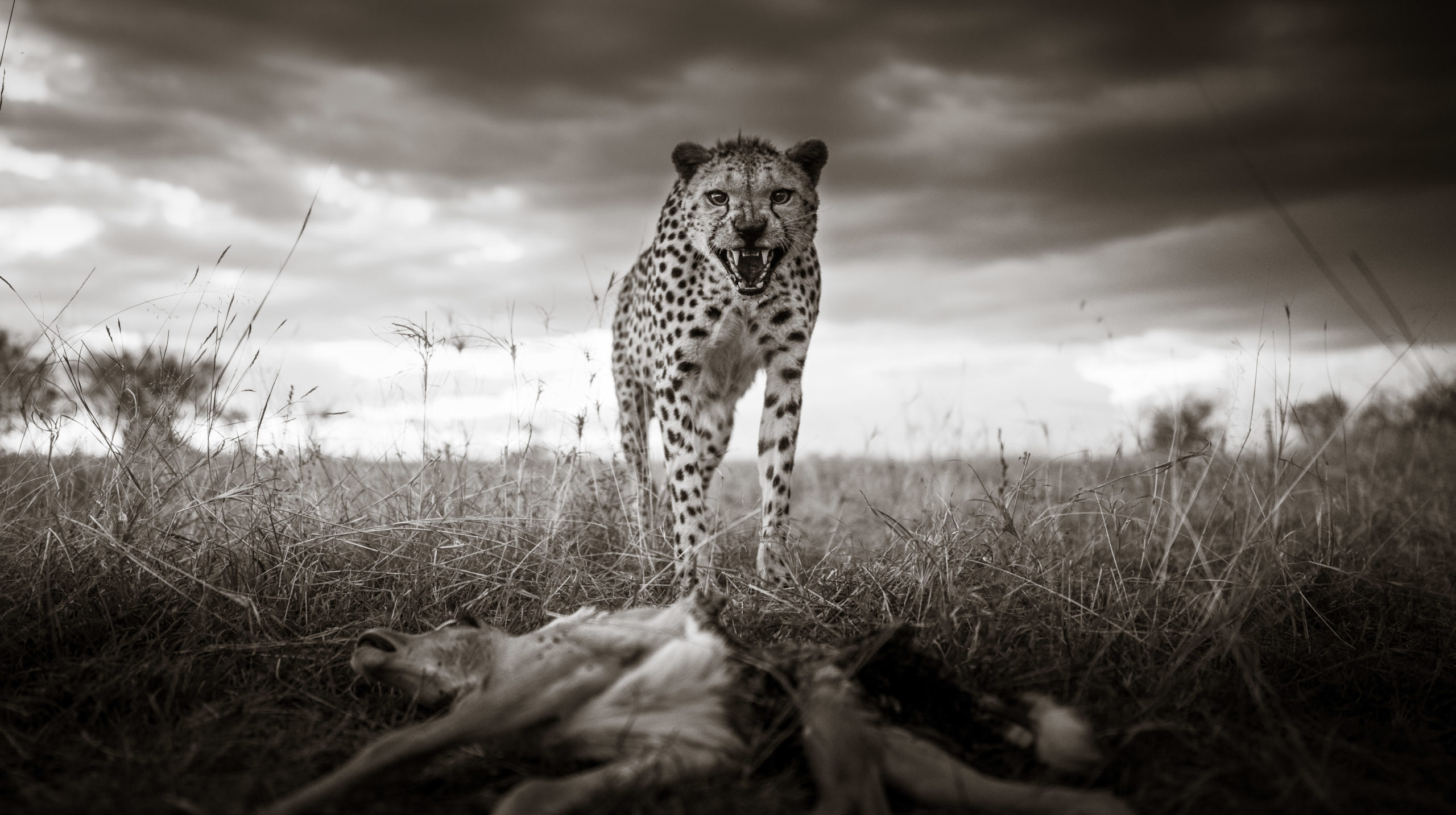
Attitude. This series of images was taken using wide-angle lenses and wireless triggers. With these iconic wild animals, being in close proximity is too dangerous, so you need to be inventive and innovative. This unique perspective is complemented by an aerial image of a hippo pod, as well as underwater images inches away from wild crocodiles. © Graeme Purdy, Northern Ireland, Finalist, Professional, Wildlife & Nature, 2021 Sony World Photography Awards
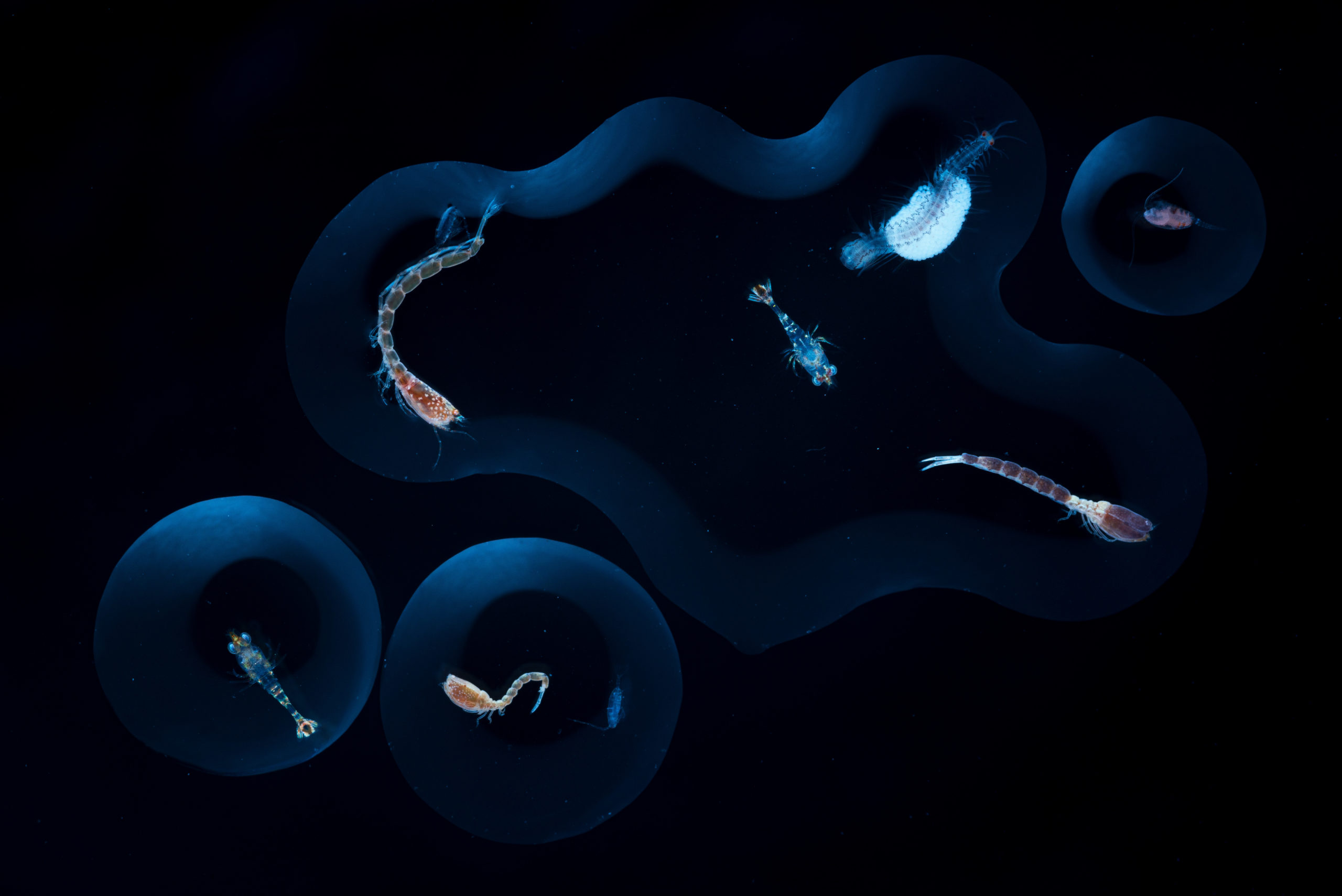
Living Kaleidoscope. Sea water drops containing several plankton creatures from a night sampling. Some of them are daytime bottom dwellers that ascend to the surface at night for feeding. Plankton is an enormously dynamic community that varies its fellows in time and space. ‘I have imagined the ocean as a superorganism, with the world’s seas as its organs, and its creatures as the tissues that interconnect everything. Sinking further down onto it, there is nothing… but sea drops.’ This figurative concept opens Sea Drops, a photo essay aimed to explore the effervescence of life inside drops of sea water. By using lab micropipettes, and a self-designed micro studio setup, the project captures the beauty and manners of live plankton, which are in the range of 200 to 1,500 microns, inside specially lit drops of water. It tells the story of one of Earth’s most pivotal biological communities with an innovative perspective, falling somewhere between art and science. © Angel Fitor, Spain, Finalist, Professional, Wildlife & Nature, 2021 Sony World Photography Awards
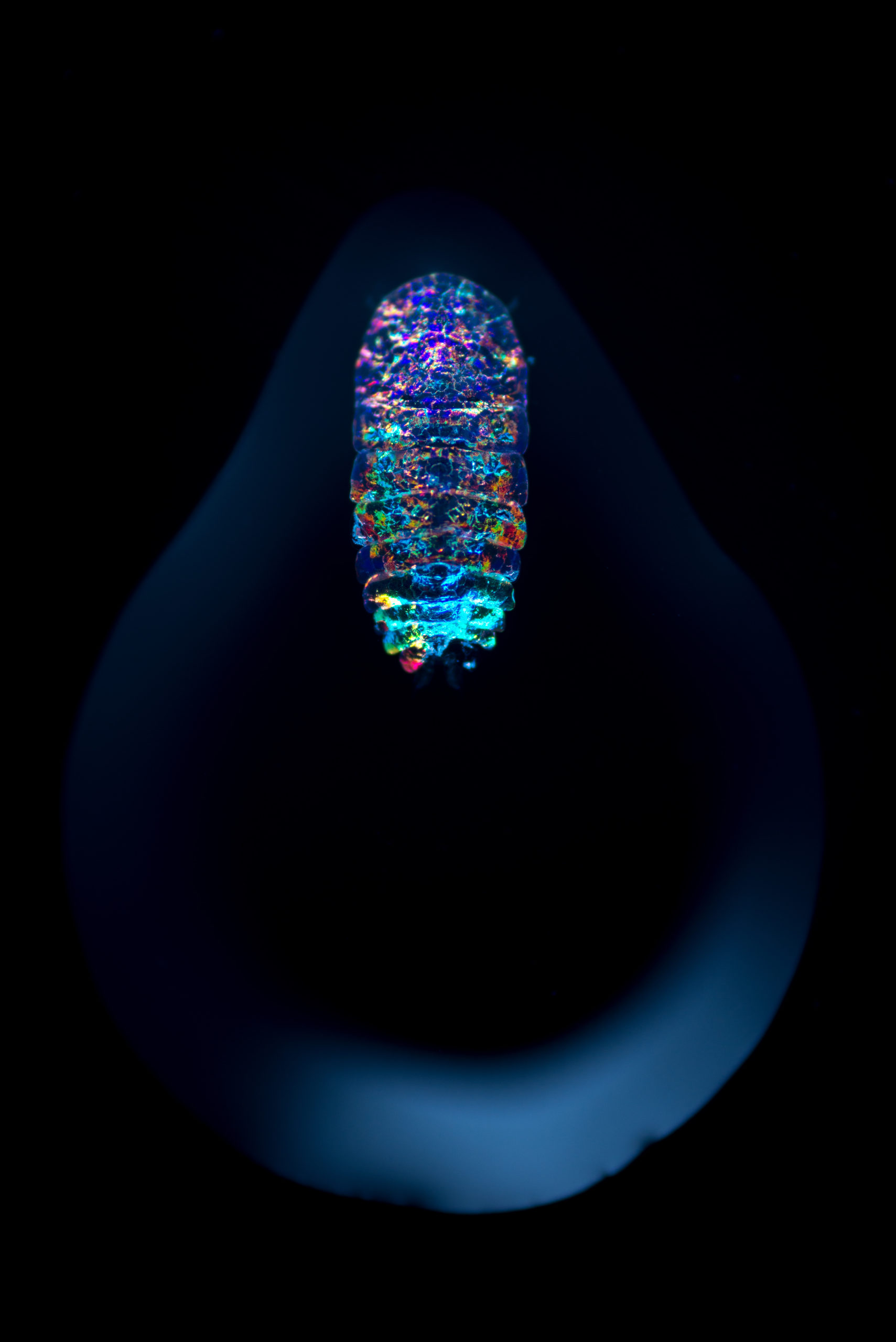
Sea Sapphire. Males of Sapphirina copepods sport a unique feature. The iridescent quitinous scutes on their backs are designed to visual communication. By reflecting the sunlight, they get females attention amidst the vastness of the ocean´s pelagic space, the largest habitat on the Planet. The true scope of the secret language of sea sapphires remains still undisclosed. The images reveal the astonishing diversity of creatures otherwise invisible to the naked eye, as well as their amazing behaviour, some of which is likely never to have been documented before. It may even be new to science. From the enthralling beauty of sea sapphires to the mesmerisingly mysterious dances of annelid worms, the project opens a drop-shaped window to a new world. All specimens were carefully handled under a biologist’s expertise, and released alive and unharmed back into the sea. © Angel Fitor, Spain, Finalist, Professional, Wildlife & Nature, 2021 Sony World Photography Awards DM/ ML














 Become an Insider
Become an Insider
Thank you for sharing these truly mind blowing photographs.
Absolutely incredible photography..thank you.
Truly wow. Thank you for sharing these amazing photographs.